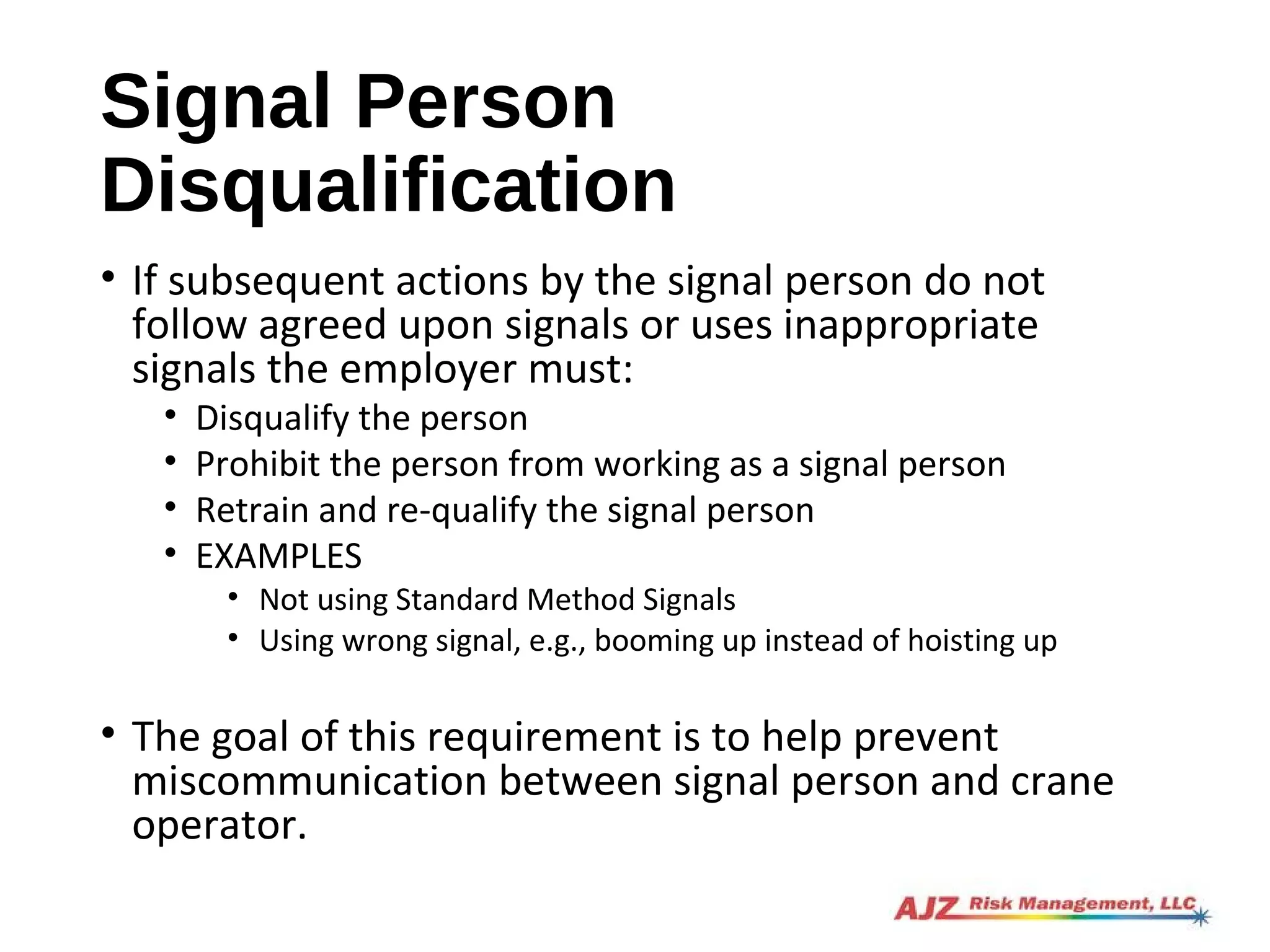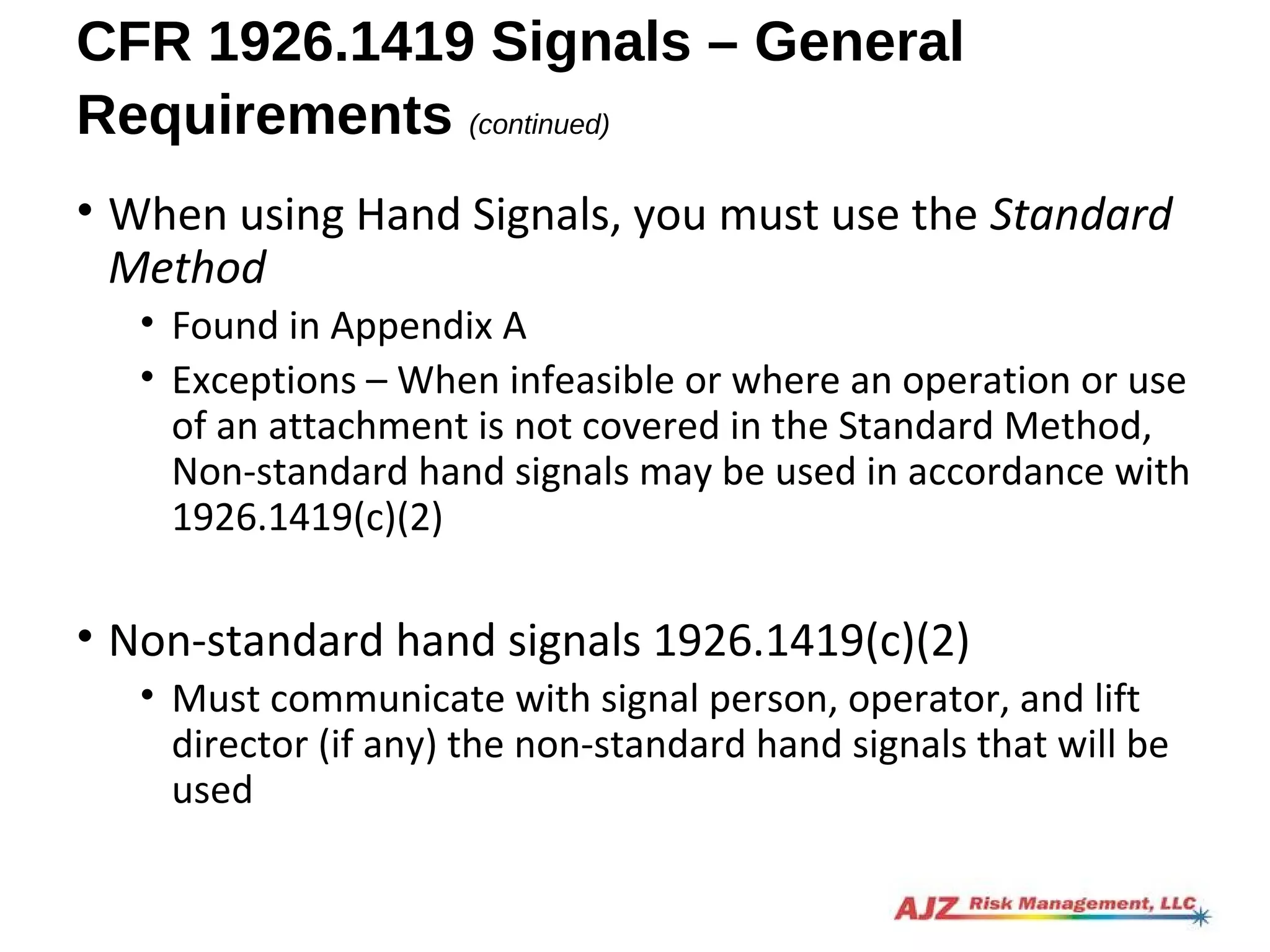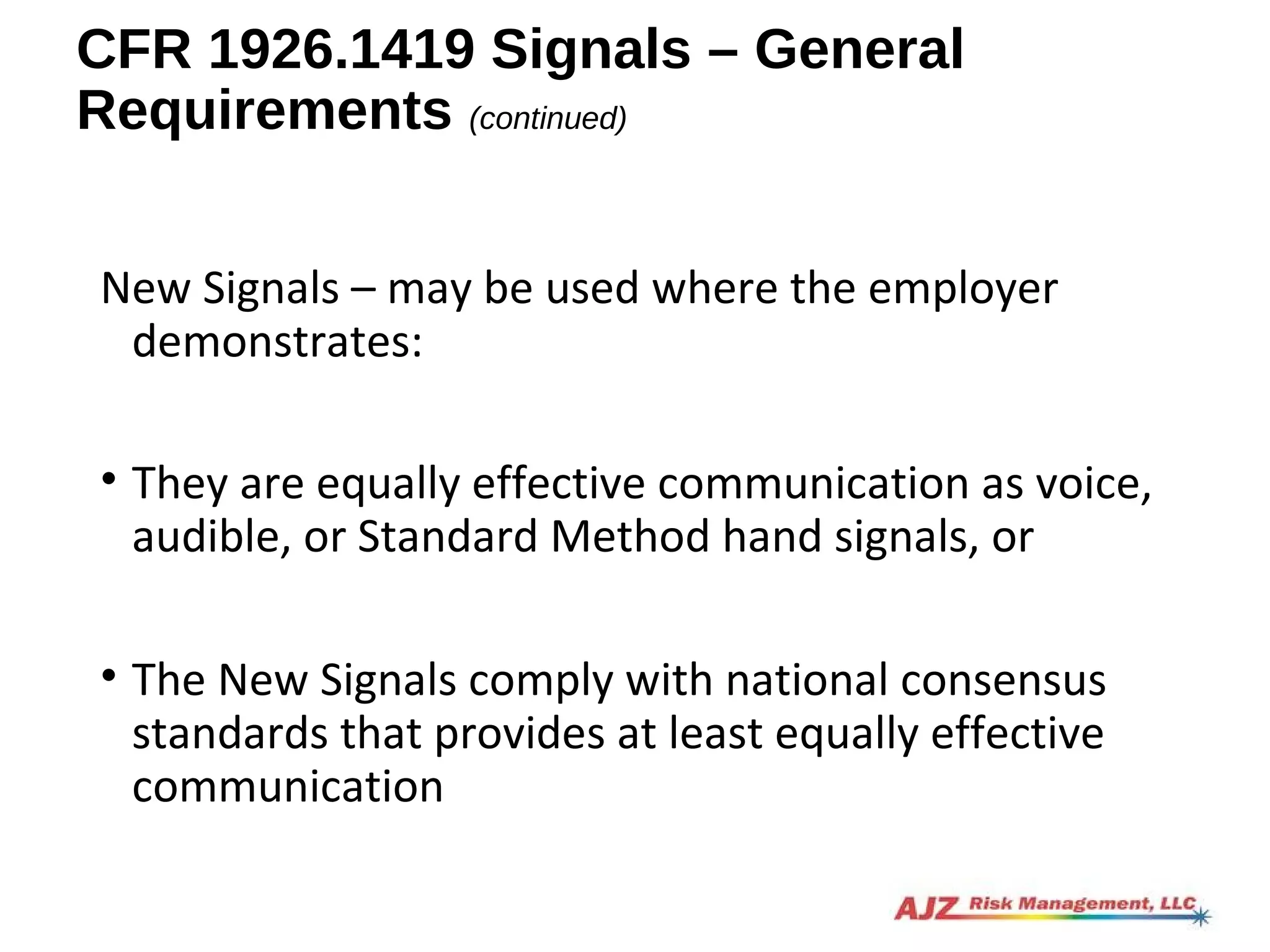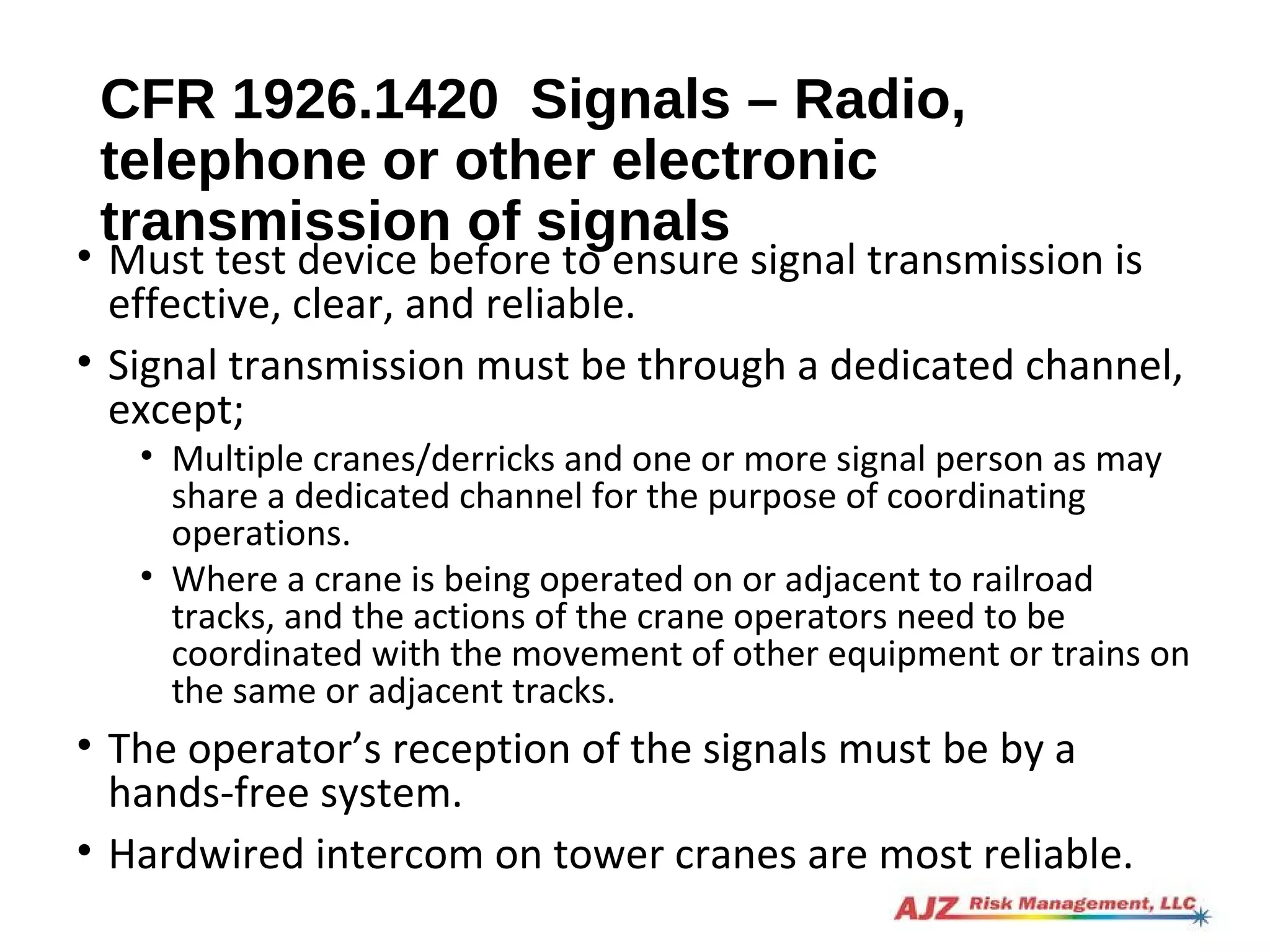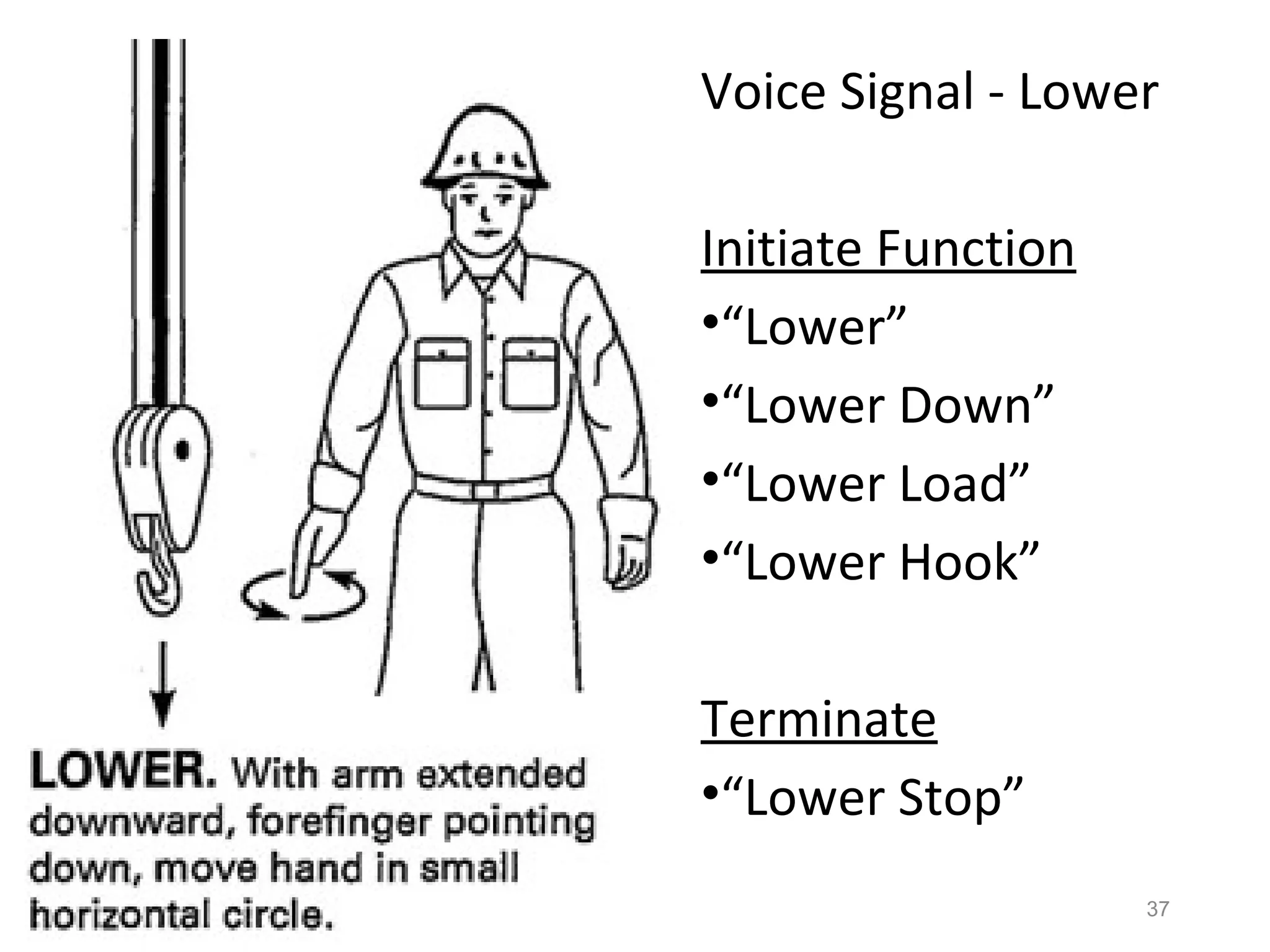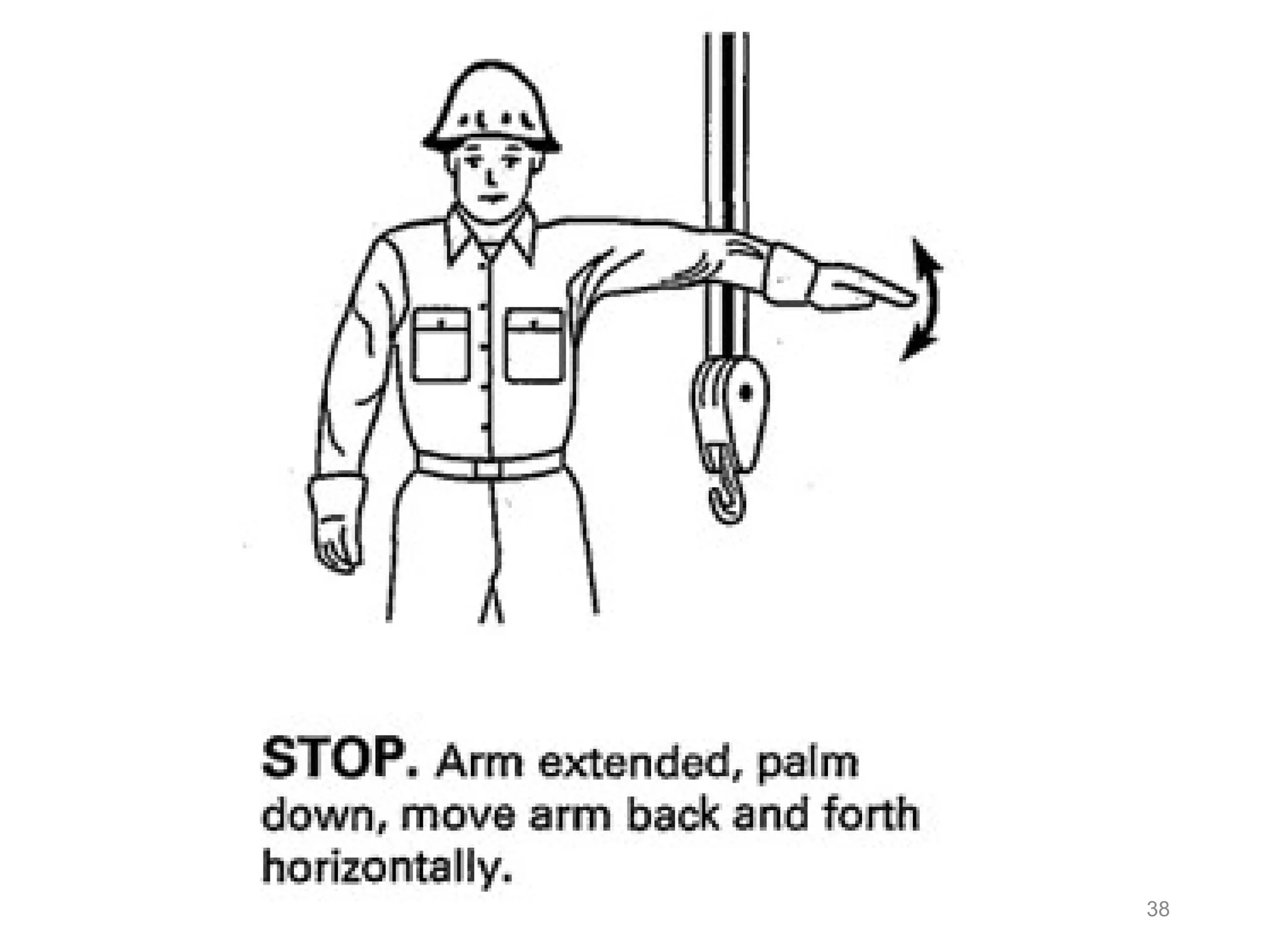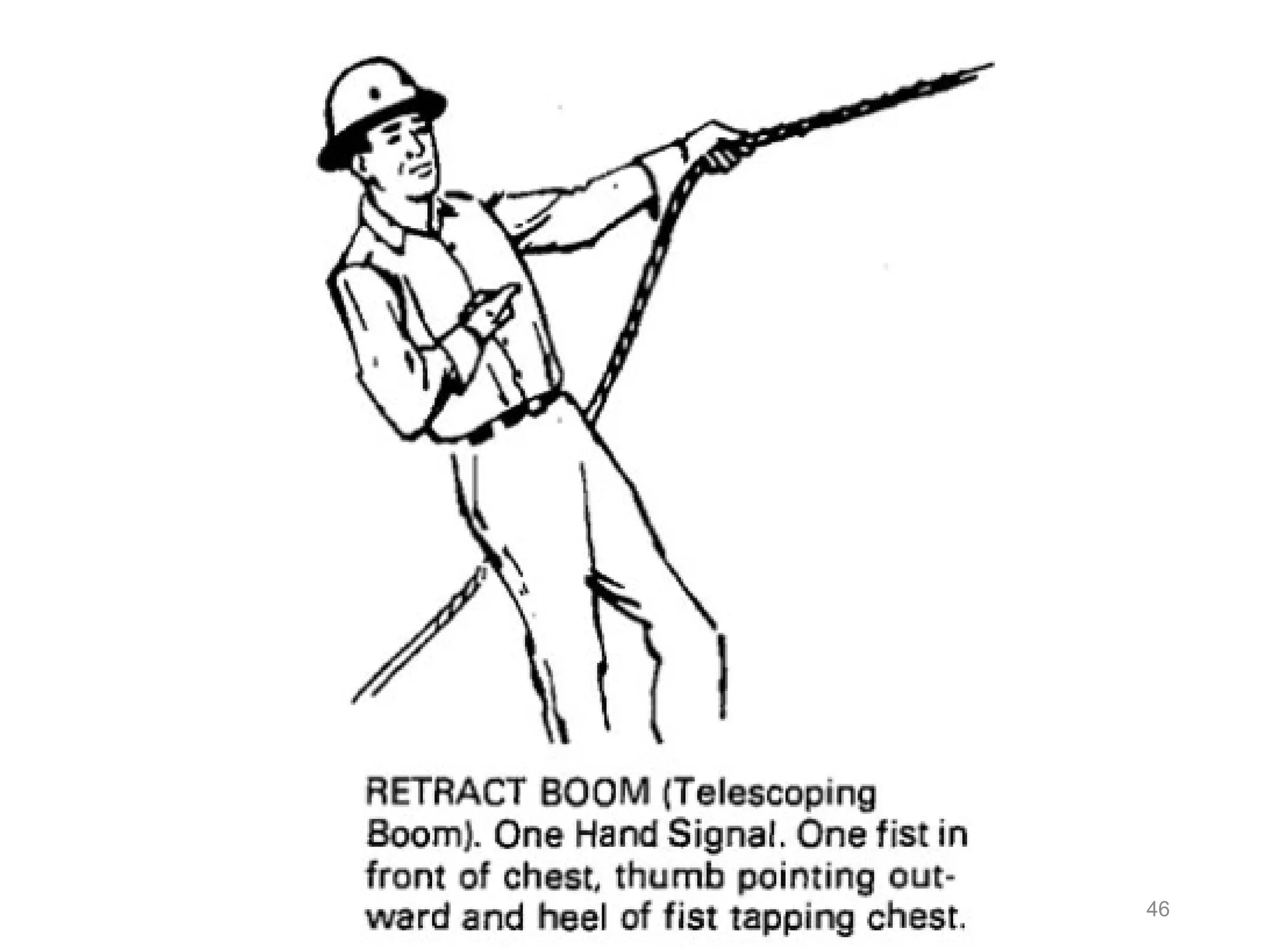The document outlines the qualifications and training requirements for signal persons in crane operations, as presented by Tony DiLorenzo, an experienced risk management professional and OSHA authorized instructor. It covers essential information including OSHA regulations, safety considerations, communication methods, and specific signaling techniques alongside the importance of proper training and disqualification protocols. The document serves as a comprehensive guide to ensure safe and effective crane signaling practices.






![OSHA CFR 1926.1428 – Signal Person
Qualifications
• Employer must ensure each signal person meets
Qualification Requirements [1926.1428 (c)]
• Two Options - Third Party or Employer
• Third Party qualification is portable
• Documentation by Third Party or Employer
• Written or Verbal Test
• Practical Test](https://image.slidesharecdn.com/crane-signal-person-training-slides-170131150155/75/Crane-signal-person-training-slides-7-2048.jpg)








